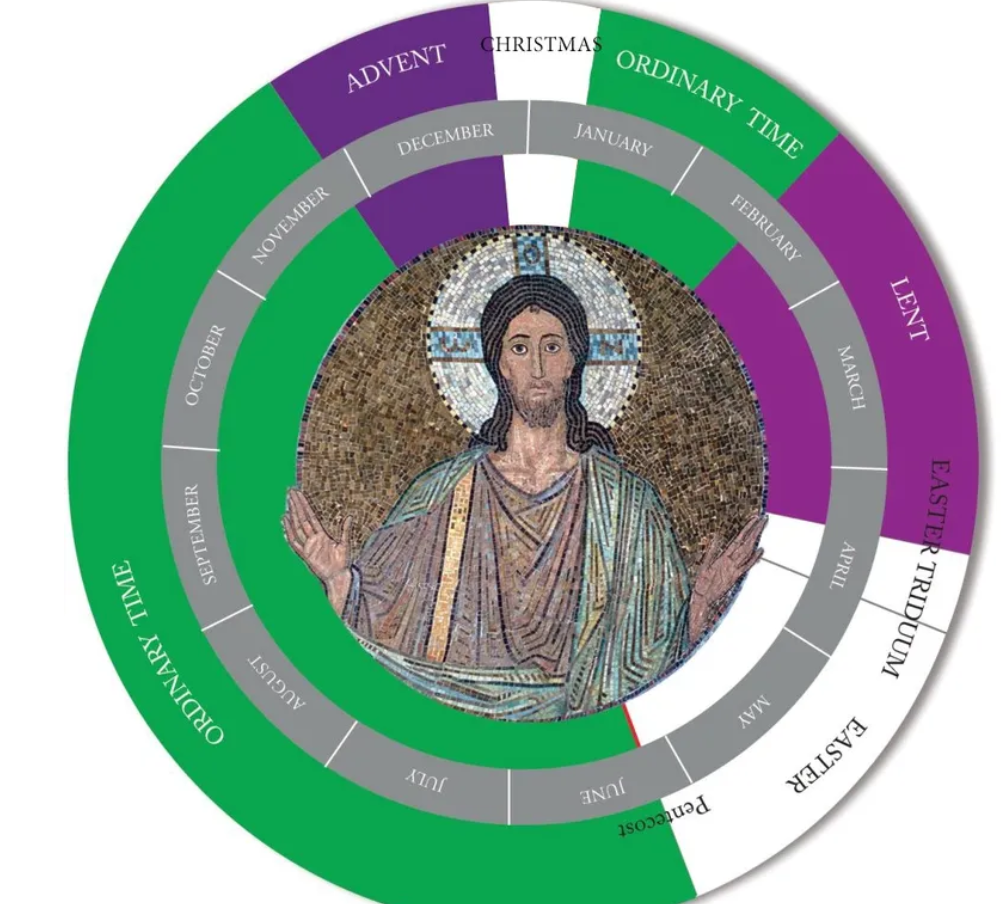The Liturgical Year
The Liturgical Year, also known as the Church Year or Calendar, is a cycle that governs the observance of various Church Seasons, holy days, feast days (including celebrations of Saints), and the reading of Scripture. These readings are organized either in an annual cycle or over several years, covering the Gospel and other readings during Mass.

In addition to guiding the Scripture readings, the Liturgical Calendar also influences the interior decoration of the Church, the colours of the Priest’s vestments (which change according to the Season), and the timing of key spiritual practices like Lent. It shapes the rhythm of the Church year and the flow of liturgical life.
The Liturgical Year is divided into seven main seasons, with the most solemn being the Sacred Paschal Triduum, the three-day period leading up to Easter. The Church Year begins with Advent, typically in November or December, and concludes the following year with the Feast of Christ the King, also in November or December.
The Season of Creation
During the season of Creation, children across school took part in an assembly based on Laudato Si. They watched the Laudato Si animation which discusses the damage being inflicted on the Earth by humans and calls on ‘every person living on this planet’ to make urgent changes to our lifestyles and how we consume energy in order to protect the planet. It deals with many environmental issues including pollution; climate change; water; loss of biodiversity and decline in the quality of human life. In their RE lessons, children have thought about how we are 'stewards' of the earth and what we can do to protect our common home.

